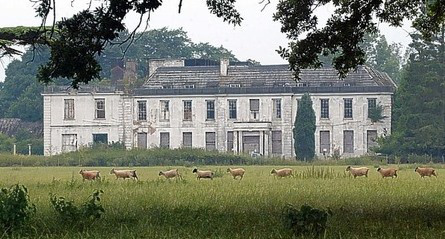
In the two decades following the Health Authority sale in 1975 the house changed hands several times with dire consequences. With the majority of the land sold off in separate lots the house and its remaining 13 acres were bought by a local business man who lived for a short time in the north wing. It was then sold on and was run as a convalescent home, but this was not viable as the local authority would only permit 24 residents which did not cover the funds required to upkeep a house of this size. In 1986 the house was repossessed by the Portsmouth Building Society.
The act of repossession set off a series of events leading to the rapid decline of the building. In the summer of 1987, in the early hours of the morning, a local farmer saw flames coming from the direction of the house. Fortunately the caretaker escaped injury in the fire, which started in the ground floor of the west wing and spread to the whole of that side of the house. The damage was enormous and estimated to be about £300,000.
The fire had been started deliberately. In September 1987 at Wonford Magistrates Court the previous owner was charged, together with two other men, with conspiring to cause a fire without lawful excuse. The owner was acquitted, one turned Queen’s evidence and received a suspended sentence and the other was jailed for two-and-a-half years.
The result of this arson was that the house became immediately vulnerable to theft and vandalism.
In 1988 a London based development company took out a mortgage with Skipton Building Society. The company’s proposal was to add a vast extension to the house and a complex of apartments. Plans were drawn up but rejected by English Heritage as they didn’t fit with the house’s Grade II listing. By the following year East Devon District Council were becoming increasingly concerned about the deteriorating condition of the house and so served an Urgent Works Notice on the company. No response was had and the council completed the essential repairs and billed the company £25,000. In 1989/90 the developer produced a new set of architects’ plans to convert to a £6 million hotel and conference centre. Full planning permission and listed building consent was given with the caveat that the main house had to be restored before development took place. There was also a requirement that essential emergency repairs were carried out as the house was becoming increasingly vulnerable to the weather. The developer did instruct a local building firm to felt and batten the roof but the work was never finished due to non-payment of bills and the work itself may have done more harm than good.
By 1992 the building had deteriorated further and East Devon District Council again assumed responsibility for carrying out emergency repairs. The District Council’s wish was that the building be restored to some beneficial use without losing its special architectural and historic interest.